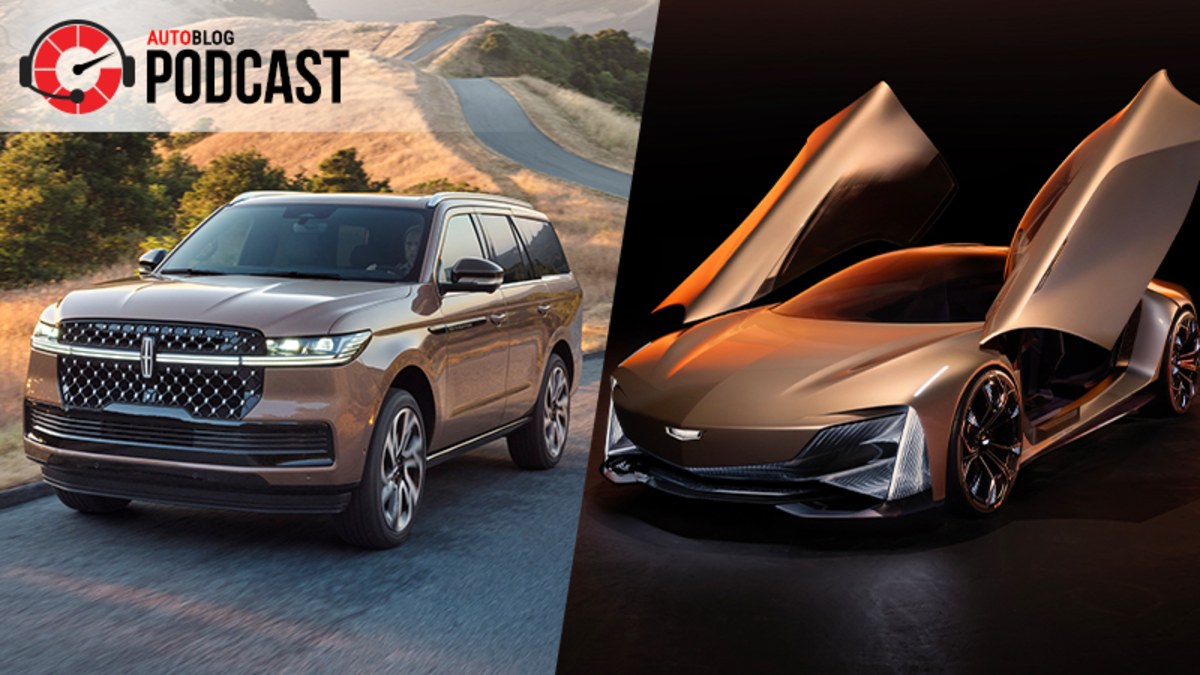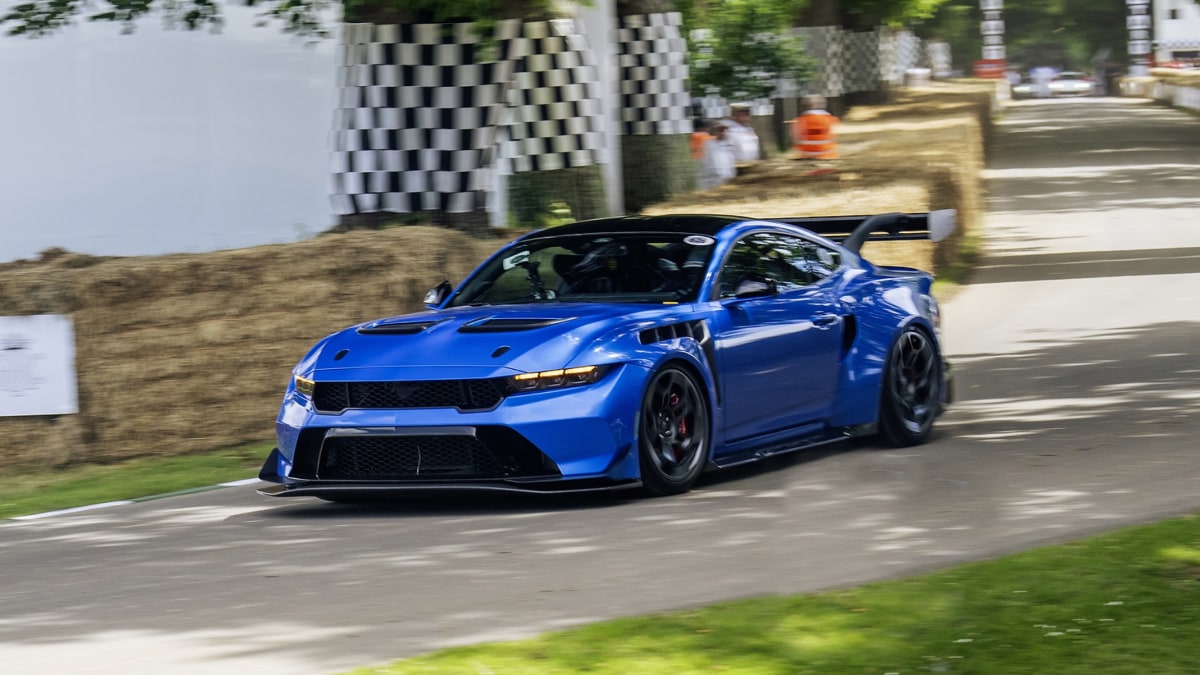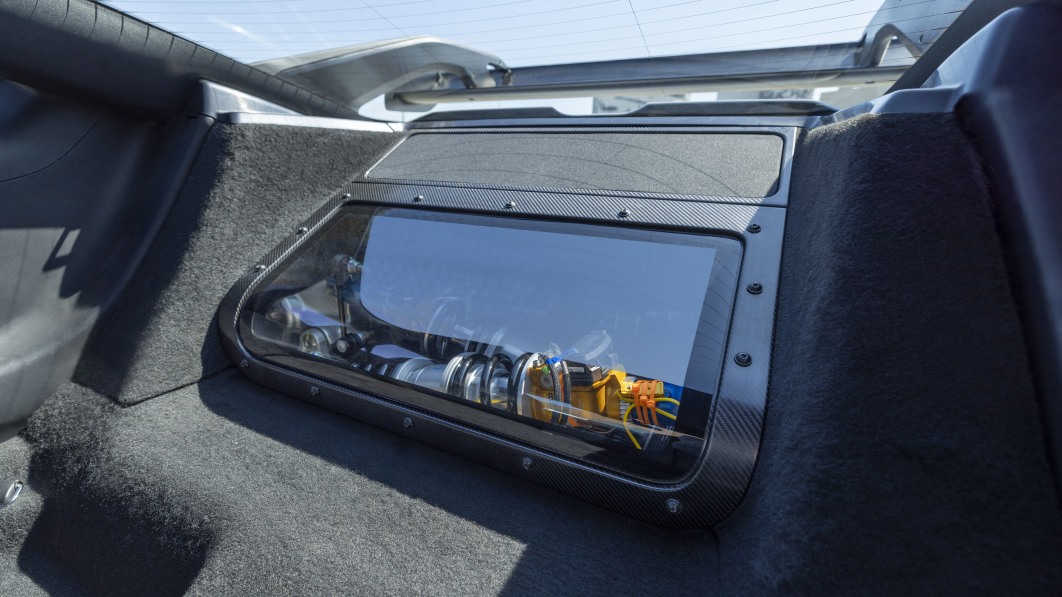Blisteringly fast, sometimes unforgiving and exclusively blue, the Mark I Ford Focus RS is a sublime analog sports car disguised as a boy-racer-ish hot hatchback. In the two decades since its introduction, this Euro-only limited production Ford has matured into a pretty desirable classic.
The first Ford Focus RS is one of the finest examples of affordable power at the dawn of the third millennium. Saying that this hot hatchback was worthy of the famous RS insignia is an understatement, because it is way more than just a Focus with a lower stance and the strongest production engine that could fit in the engine bay. It was conjured, engineered and executed out of sheer enthusiasm rather than for profits, and that shows from the moment you step on the gas.
If you’re lucky enough to live in Europe, continue on to see why you may want to get one of these cars for yourself right now (or as soon as it turns 25 if you’re in the US).
Ford Focus RS Background and Development
Starting with the British Escort RS1600 two-door sedan in 1970, the European Ford and Cosworth embarked on a joint venture to create a number of RS cars—fast Blue Ovals for rally and sport. Though the RS insignia appeared on the Capri Coupé, the Sierra sedan and as a standalone badge on the RS200 Group B special, it was really the Escort RS that had the strongest impact on the masses.
Whether it was a rear-wheel drive sedan or a front-wheel drive hot hatch, with or without turbochargers, the Escort RS never failed to give power to the people—becoming an integral part of European automotive folklore for three decades. On the other hand, each regular Escort couldn’t be farther from its RS-badged counterparts, as it was getting increasingly dull, stripped of any joy and character with each new generation that entered the market.
In its sixth and final generation, the Escort RS got a dramatic sendoff in 1992, as the Ford Escort RS Cosworth. A phenomenal version of an otherwise terrible car, this masterclass in hot hatch engineering was built on a shortened Sierra RS chassis, meaning it had four-wheel drive and a 2.0-liter, 224 horsepower Cosworth YBT T34 four-pot.
This Group A homologation special didn’t manage to win a WRC title, but its whale tail spoiler and mean attitude ensured it a place in the British automotive pantheon.
The Ford Focus in the New Millennium
The Escort survived throughout the nineties and the early aughts and was desperately in need of being replaced by an all-new philosophy. With a history of building joyless cars, Ford had to reinvent itself to stay relevant globally. Moreover, as per the Ford 2000 plan, the new millennium asked for a true world car to spearhead the Blue Oval’s lineup in all corners of the Earth.
That car was the Focus—the funky compact hatchback that debuted in 1998 in Europe and got to the US in 1999. Developed under the brilliant Richard Parry-Jones, the Focus was more than just a new name in the C-segment; it was a disruptive force.
What Parry-Jones wanted was an affordable car people would actually enjoy driving. He pushed to make a car that steered more precisely and had better road holding while still being affordable for the customer and commercially viable for the company.
The risk he took with a novel rear suspension design paid off, and the Focus eclipsed both its predecessor and head-on competitors, making their engineering solutions seem dated and inferior.
Conceiving the Mark 1 Ford Focus
Thanks to Parry-Jones, the Focus was an entry level family car that felt fun, comfortable and involving—something the competition could hardly follow. With such a foundation, Ford naturally had sporty ambitions for the new nameplate.
Still, the idea of a really hot Mark 1 Focus was still a European affair. After all, hot hatchbacks always felt more at home in Europe, and Ford didn’t abandon its rallying efforts, teaming up with M-Sport to build and run the Focus WRC and signing superstar driver Colin McRae for the 1999 season.
The same year, Ford showcased the Focus Cosworth concept car at the Los Angeles Motor Show—but behind the curtains, the upcoming Focus was distanced from Cosworth, and the high performance model was entrusted to a team of 60 engineers from Ford and Tickford Engineering.
To make the hot Focus a reality, Tickford re-engineered 70% of the base car, sourcing specialized high quality components from Quaife, Garrett, Brembo and Sparco, among others.
Initially, this hot hatchback was supposed to be a Ford Racing Focus, but after the Ford Racing Puma was not met with the reception it frankly deserved, Ford decided to revive the evocative RS badge—which turned out to be just the right decision.
The Birth of the Ford Focus RS
Still in development, the pre-production car was shown at the Birmingham Motor Show in 2000 and the 2001 Geneva Motor Show, but the production took longer than expected. So the Focus RS hit the showrooms in late 2002, a year and a half later than originally planned.
In the meantime, Ford unveiled the 170-horsepower SVT Focus for the US market in 2001, whereas Europe got the spiced up ST170 in 2002.
Despite the development being carried out in the United Kingdom, Ford produced the Focus RS in the Saarlouis plant in Germany between 2002 and 2003, making it available in 4501 copies only. Unsurprisingly, the UK market was the biggest one, with 2147 cars being right-hand drive, whereas the remainder was scattered throughout Europe.
The RS model was based on the pre-restyle Focus, despite the regular model receiving a refresh in 2001. However, halfway through the production run, it did get a number of mild changes colloquially known as Phase 2.
From a cynical point of view, the Focus RS was a parts bin special, but the choice of high quality suppliers and how all their parts worked together made the final product well worth the RS badge (and the wait). The Focus RS was received as an instant hit, praised for its physics-defying handling, and revered for its turbocharged power delivery—all at a competitive price of only 19,995 pounds.
For a multitude of reasons, the Focus RS became a hot topic in all echelons of European car culture. On the streets, the tracksuit-wearing crowd was charmed by its looks and performance, whereas the racing community appreciated all the engineering that went into it, making it a solid foundation for rallying.
So, two decades later, how does the original Focus RS hold up? Is it still hailed for all its traits and what made it a crown jewel of the Focus range in the first place? Let’s see!
Chassis, Body, & Interior of the Ford Focus RS
Exterior Impressions of the Ford Focus RS
The looks of the Focus were the most distilled expression of Ford’s New Edge design language, but the final execution didn’t sit well when the Focus came out in 1998. Unlike the whimsical Ka supermini and the handsome little Puma, the Focus was just too odd and radical, especially for a car in a segment that had to appeal to the widest of audiences.
Under Jack Telnack and Claude Lobo’s guidance, John Doughty blended straight lines and curves with sharp angles and clean geometric surfaces, making the Focus stand out from its relatively conservative contemporary competition. Today, this clean and simple look has aged exceptionally well, making the original Ford Focus an exemplary piece of turn of the millennium car design.
For the RS model, the structurally sound 3-door Focus shell underwent a comprehensive overhaul, transforming the clean, futuristic silhouette into a car that would be more aggressive and appealing to the new generation of hot hatch aficionados.
With flared wheel arches, a tailgate spoiler, a unique front bumper adorned with a gaping air intake, fog lights, and air extracting louver-like vents, the Focus RS looked quite like its increasingly popular rallying counterpart.
Beneath the surface, the unibody shell was strengthened throughout, increasing the car’s rigidity and ability to withstand punishment when pushed to its limits. As a final touch to this special treatment, the original Focus RS could be painted any color the customer wanted—as long as it was Imperial Blue.
Inside the Ford Focus RS
The true blue theme continued on in the interior as well, with Sparco bucket seats finished in black and blue vertical stripes with black Alcantara accents. Breaking the tradition, Ford chose Sparco over Recaro as a supplier for all other RS-specific parts, so the interior got bespoke aluminum pedals, a handbrake lever, a gear stick, and a ball-shaped knob, too.
Other details unique to the RS were custom blue gauges and a steering wheel wrapped in blue and black leather with a blue 12 o’clock marker. Rather inexplicably, the water temperature gauge inside the instrument cluster was omitted in favor of a turbo boost gauge, prompting many owners to find aftermarket solutions for reading out vital engine parameters.
Finally, the last RS-specific interior bit was a unique carbon fiber gearbox console with a green starter button and a stamped serial number of each car produced. The Phase 2 model got “ENGINE START” written around the green button, as well as additional stitching on the seats.
Ford Focus RS Engine & Transmission
The Focus RS was powered by a transversely mounted 2.0-liter DOHC inline four from the Zetec-R family, yet branded as Duratec RS. This 16-valve four pot has a cast iron block and aluminum head and was thoroughly re-engineered to withstand additional power coming from forced induction.
That being said, Duratec RS got forged pistons and connecting rods, sodium-filled valves, a more capable water pump, an oil cooler, and high flowing injectors.
The aviation grade Inconel-made Garrett GT2560LS turbo was developed exclusively for the Focus RS, allowing the Duratec RS to produce a total of 212 horsepower at 5,500 RPM and 229 lb-ft of torque at 3,500 RPM. This power gave the 2,817 lb car a 0-60 time of 6.3 seconds and a top speed of 144 miles per hour—quite a punch for an early 2000s hot hatch and still respectable today.
In Phase 2, the car got a new engine map, making it less thirsty and more friendly for daily use.
Power delivery was as direct as could be, with Ford bypassing turbo lag by cooling the compressed intake air via a liquid circuit with a separate radiator instead of using a conventional intercooler system. By saving space like this, the engineering team improved responsiveness, cutting on lag one would usually find in turbocharged cars of similar vintage.
Via a composite AP Racing clutch, the engine was mated to the only transmission that could fit the Focus and withstand the engine’s torque output. It was the Ford MTX-75 transmission, a close-ratio 5-speed unit with a short shifter kit, sending power to the front wheels through a bespoke Quaife automatic torque biasing differential.
Distributing torque to the wheel with more traction, the worm gear Quaife ATB diff was a key piece for the Focus RS’ exceptional handling, though the car also gained a reputation for torque steer, especially in wet weather and despite Tickford’s efforts to minimize it.
What definitely didn’t help is that the original Focus RS had a front-biased weight distribution of 59.5:40.5 and no form of traction or stability control, making it too challenging in the hands of inexperienced drivers.
Ford Focus RS Suspension & Handling
The Focus’ main selling point was its MacPherson suspension at the front (similar to what you’d find in a Mustang) and what Ford called Control Blade at the rear. Richard Parry-Jones’ brainchild, this compact multi link suspension blended the packaging of a trailing arm setup with geometry of a double wishbone suspension.
In this setup, the Control Blade steel trailing arm took care of the braking and traction loads, whereas the long rear lateral arm controlled the toe and two shorter front lateral arms controlled the camber.
This engineering solution increased ride quality and enhanced the car’s maneuverability in many ways, giving the engineers greater ability to fine tune it on the RS model, while the clever design also lowered the center of gravity by eliminating the need for rear shock towers. The fact that it was fairly cheap to produce and easy to assemble created a breakthrough in the segment, giving the Focus a huge advantage on the market.
For the RS, the engineering team completely overhauled the suspension, redesigning new front arms, lower arms and trailing arms, stronger bushings, and anti-roll bars, and installing stiffer Sachs dampers.
As a result, the Focus RS was lowered by 25mm (compared to the standard version) and, in addition to that, it had revised geometry and wider track on both axles, matching the Focus WRC 03 rally car’s track.
As the final piece of the handling puzzle, the RS got a quicker steering rack too—amping up its responsiveness and allowing for more direct feedback at the steering wheel.
Ford Focus RS Brakes, Wheels, & Tires
Stopping power was granted through a Brembo system with 324 mm ventilated and grooved steel discs at the front and and 280 mm solid discs at the back. The rotors were gripped by four-piston calipers front and single-piston floating calipers in the rear.
The Focus RS was exclusively equipped with lightweight 18×8-inch five-spoke OZ Racing wheels with a 4×108 bolt pattern, and wrapped in 225/40ZR18 Michelin Pilot Sport high grip tires.
Legacy of the Ford Focus RS
Offering a raw and thrilling analog run for quite an affordable price, the original Ford Focus RS succeeded in becoming another street racing hero for the Playstation generation, while McRae’s rallying escapades between 1999 and 2005 wrote its name in Y2K’s motorsport history.
Although the road going Ford Focus RS wasn’t directly a homologation car for the radical Focus RS WRC 03, strong associations between the two cemented the car’s cult status—making it a worthy successor to everything the Escort had accomplished in past decades.
But before it became cherished as a legitimate modern classic, Focus RS was first loved for its immense tuning potential. Its bulletproof engine and turbo setup made it ideal for various modifications, be it for road, track or rallying use. This in turn means that the number of surviving examples is limited even further, especially those in their original condition.
As it usually goes with limited supplies of cars that happen to be amazing, the increasing demand for this model has driven values back up to its original price tag. And the fact that it is another phenomenally fast Ford that America never got will make it even more valuable when it reaches 25 years of age.
The automotive industry has shown us too many times that looks can be deceiving. With its street-fighter-esque, cartoonish features providing cover for a mature and compelling sports car, the Mark I Ford Focus RS is one of the brightest examples of how the art of deception can amaze you once you look beyond the surface.
All photos by Djordje Sugaris.
















